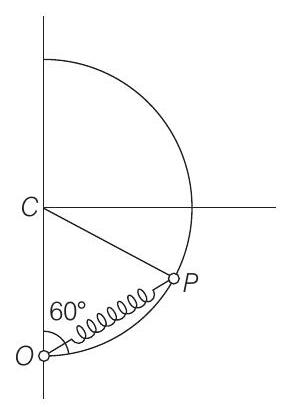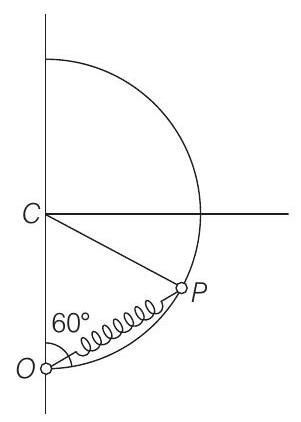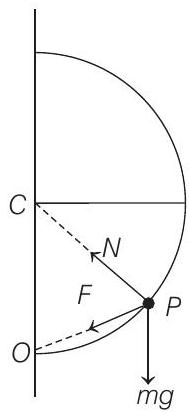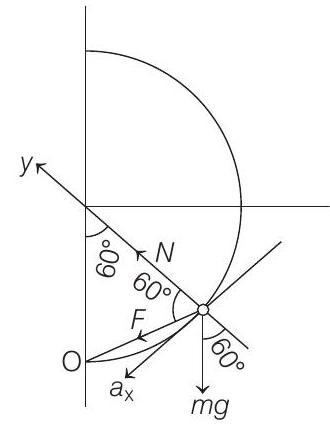Laws of Motion 5 Question 9
9. A smooth semicircular wire track of radius
The spring is released, (a) Draw the free body diagram of the ring. (b) Determine the tangential acceleration of the ring and the normal reaction.

Show Answer
Solution:
Radius of circle
Therefore,
equilateral triangle.
Hence,

Natural length of spring is
The free body diagram of the ring will be as shown below.

Here,
(b) Tangential acceleration,
The free body diagram of the ring is shown below.

Therefore, tangential acceleration of the ring,
Normal reaction,






